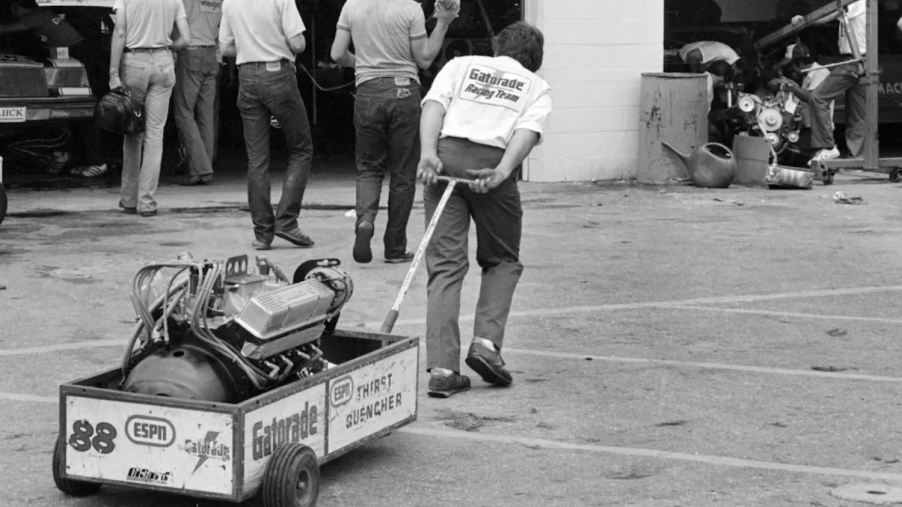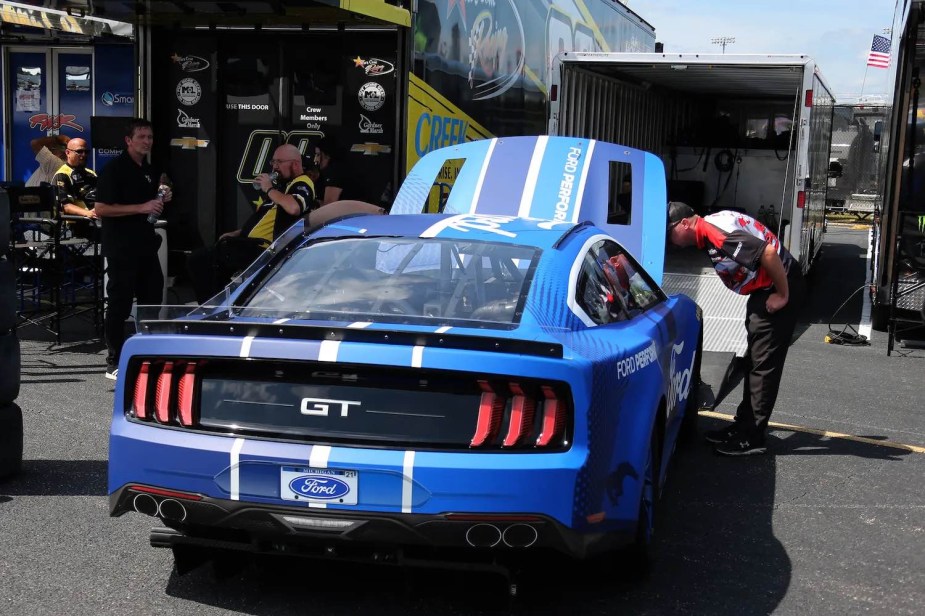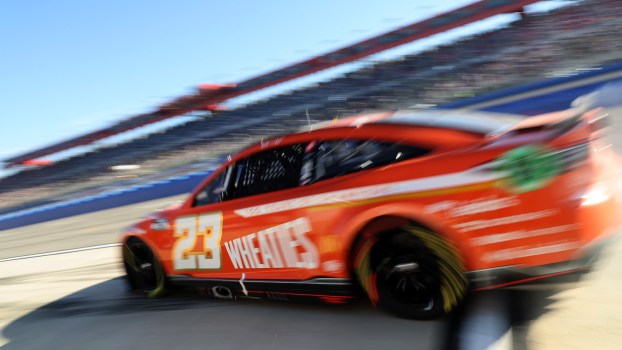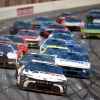
How Does a NASCAR Engine Work?
The traditional V8 in today’s NASCAR Cup racing cars can trace its roots to some of the earliest stock car races in the USA. While designated suppliers build many other components of the Next Gen cars, the V8 engines are still unique to each OEM: Toyota, Ford, and Chevrolet. These engines give each brand of car its own personality. They also give the NASCAR Cup series its unique flavor among motorsports.
Next Gen NASCAR engine specs
- Type: Naturally aspirated pushrod V8
- Horsepower: 670 (maximum allowed)
- Torque: 530 lb-ft
- Displacement: 358 cubic inches (5.8 liters)
- Redline: 10,000+ RPM
- Compression ratio: 12:1
- Fuel injection: McLaren Electronic Systems
What makes a NASCAR engine so powerful?
A Gen 7 (Next Gen) NASCAR V8 engine from Ford, Chevy, or Toyota can make up to 670 horsepower and 530 lb-ft of torque. They are certainly more powerful than most production car engines, but their output is limited by Cup Series officials to reduce the cars’ top speed.

In 1987, a NASCAR Cup car set a 212-mph record. Another car flew off the track and came very close to killing a stand full of fans. NASCAR officials decided enough was enough. For 31 years, every team has had to fit their Cup cars with a regulation “restrictor plate” to limit the amount of fuel-air mixture that can pass into the cylinders. For years, this effectively limited the stock cars to 410 horsepower.
The 2022–present Next-Gen cars are the same for road courses and superspeedways. Because their aerodynamics are symmetrical, they must make 1,000 more pounds of downforce to stay on track at superspeedways. To fight this downforce, officials allow “tapered spacers” instead of restrictor plates on the shorter tracks. When these engines can breathe easier, they make about 670 horsepower. On the long superspeedways, they are limited to 510 horsepower.
Since the introduction of the restrictor plate, NASCAR engine builders don’t bother tuning their powerplants for peak horsepower or torque. Unlike V8s in, say, drag racing, NASCAR V8s have been built to offer that 410 horsepower across as much of the power band as possible.
We’ll have to see how they evolve with the Next Gen rules. Hendrick Motorsports/ECR Engines builds Chevrolet’s NASCAR engines. Roush-Yates Engines builds Ford’s. And Toyota NASCAR engines originate in-house from Toyota Racing Development.
How do NASCAR engines rev so high?
NASCAR engines are 358 cubic-inch pushrod V8s. Even though they are a traditional “overhead valve” design, they leverage advanced technology such as titanium valves and a dry sump to redline at 9,000 rpm or higher. Their wide power band makes them versatile race engines.

Obviously, different teams — and different drivers — have their own strategies. But fans know it’s not uncommon to wait until 9,000 rpm to shift. That’s a high-revving engine! It’s even more impressive considering these are overhead-valve (pushrod) V8s. But NASCAR engine builders are among the best in the world.
One big difference between a NASCAR V8 and the engine in your truck is that the race engine has no oil in its sump. Yup, the NASCAR V8 is engineered to vacuum oil out of the sump as soon as it lands and then store it in a reservoir connected to the oil pump. Why? Because a crankshaft spinning through oil is like you trying to run through water: slow.
NASCAR engines also leverage lightweight valve train technologies, such as titanium valves, to allow them to redline higher than most V8s. The current NASCAR engines have a compression ratio of 12:1. Since the 2012 season, they have all used fuel injection instead of carburetors. The Next Gen fuel injections system is built by McLaren.
How many miles does a NASCAR engine last?
A NASCAR team can only have 13 engine blocks during a season. They must rebuild each engine and use it at least twice. In practice, they might have to use a single engine block more times, equaling thousands of miles of qualifying and racing.

NASCAR engine builders do not design their powerplants for long-term use. But the average NASCAR race is roughly 400 miles. The same engine must be able to stand up to qualifying and practice laps, so they are built for more than 400 miles.
That said, the teams fully expect to swap engines out and tear them down between races. These V8s are built for high RPM and high compression, not longevity.
What happens to a NASCAR engine after a race?
After each race, the teams rebuild their engines because they are only allowed 13 blocks. But they are allowed new wear items, such as piston rings and bearings. Obviously, at the end of the season, they get rid of the old blocks and cast a set of new ones.
Occasionally, a catastrophic failure puts one of their 13 blocks out of the running for the season. Strategizing how to use a limited supply of engine blocks best is one of the most important decisions a NASCAR team can make. If there is a race that a NASCAR team needs to win, it might choose to use a “tighter” engine block that has seen fewer miles of racing and thus retains higher compression. Other teams might hold back some blocks for the end of the season.
Can you buy NASCAR engines?
Yes, you can buy a surplus 6th-generation NASCAR engine surprisingly cheaply. Or you can hire the shops that build the current (7th/Next Gen) NASCAR engines to build a new V8 for your next project. But you won’t get every component used in the latest NASCAR engines.
For example, Hendrick Motorsports uses top-secret pistons, oiling systems, and camshafts on its latest engines. So, while you can order a small-block V8, similar to what it builds for NASCAR, you won’t get the latest and greatest versions of these bits.
Many of the NASCAR teams are headquartered in Mooresville, North Carolina. MotorTrend reports that attending end-of-season auctions in person is still one of the best ways to score used NASCAR parts–and even engines–for cheap.
The 2022 Next Gen rule change led to many all-new engine components. In response, suppliers such as Triad Racing Technology, which works with Toyota, sold off tons of unused older engine components, many of which are floating around the greater hot rod marketplace.
Next, read our Ultimate Guide to the NASCAR Next Gen car, or see how NASCAR engines have evolved over the past 30 years in the video below:





